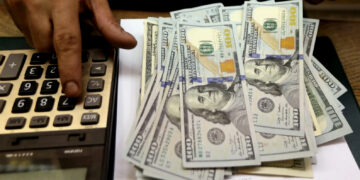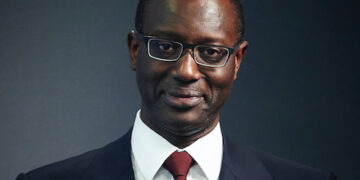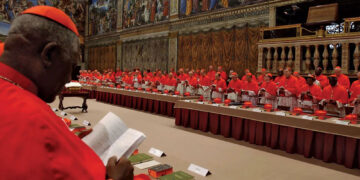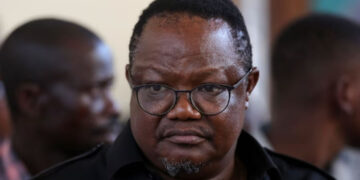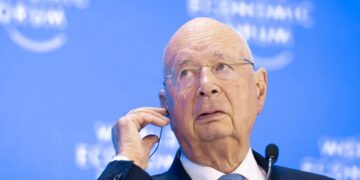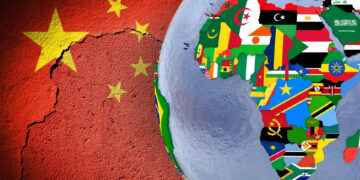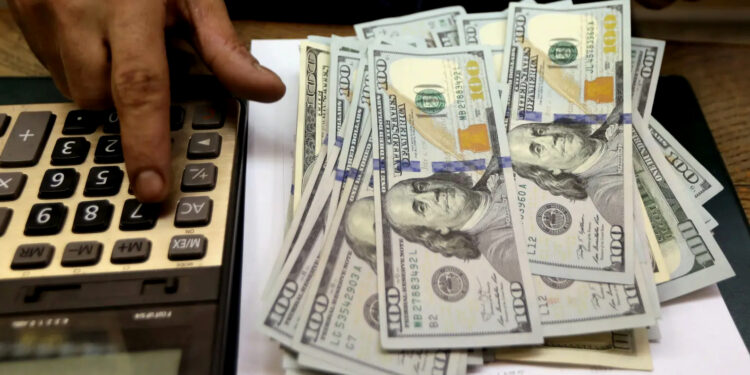By John Ikani
The world’s stockpile of foreign exchange reserves reached a new high of $12.3 trillion at the close of 2023, marking a 3.5% increase compared to the $11.92 trillion recorded a year prior.
This data comes courtesy of the International Monetary Fund’s (IMF) Currency Composition of Official Foreign Exchange Reserves (COFER).
Nigeria’s Shrinking Share
Nigeria’s foreign exchange reserves landed at $36 billion by year-end 2023, representing a mere 0.26% of the global total.
This signifies a decline from the roughly 0.36% share held in 2022. Nigeria has struggled to build its forex reserves, experiencing a noticeable drop to around $32 billion by April 2024.
A combination of declining forex inflows and rising outflows contributed to this decrease. While Nigeria closed 2022 with $36 billion in reserves, the combination of these factors led to a decline to $32.3 billion by the end of 2023.
Looking at quarterly data, Nigeria’s share of global forex reserves also shrank. As of Q3 2023, the country’s portion stood at 0.28%. Nigeria ended that quarter with a forex reserve of $33.32 billion.
Global FX Reserve Composition
In terms of currency composition, the U.S. dollar maintained its dominance in Q4 2023, accounting for $6.687 trillion, or 54.22% of global forex reserves. This is quite similar to Q4 2022, where the USD’s share stood at $6.46 trillion (54.21%).
While the USD’s share remains relatively stable in 2023, it’s significantly lower compared to its 59% share in Q4 2020 and a far cry from the 71% dominance it held in 1999.
The Euro’s share in Q4 2023 was $2.29 trillion, representing 18.55% of the global total. This shows a slight year-on-year increase from $2.25 trillion in Q4 2022. However, the Euro’s share dipped marginally from 18.9% in Q4 2022.
Since 1999, the U.S. dollar’s dominance has steadily declined, while the Euro’s share has remained relatively stable, hovering around the 20% mark since its introduction.
The Pound Sterling and Japanese Yen have maintained consistent shares in global forex reserves, each holding around 4.5% and 5% respectively as of Q4 2023. This consistency has been observed since 1999.
The IMF attributes this shift in the composition of global forex reserves to the rise of non-traditional reserve currencies.
The share of other currencies, including the Chinese Renminbi, Canadian Dollar, Australian Dollar, and Swiss Francs, reached 10.3% in Q4 2023, up from 9.9% in Q4 2022 and 9% in Q4 2020.
Opacity in Nigeria’s FX Reserves
Controversy surrounds the exact composition of Nigeria’s forex reserves. Past reports suggest that a portion might be held in Chinese Renminbi and gold.
Publicly available data on the composition of Nigeria’s forex reserves only extends to Q3 2022. Back then, Chinese Yuan constituted $3.2 billion of the total reserves.
Adding to the lack of clarity, a recent Fitch report claims that 30% of Nigeria’s forex reserves comprise foreign exchange bank swaps. This suggests that a portion of the reserves could be considered unallocated.
Furthermore, a report by the Economist Intelligence Unit in August 2023 suggested that 40% of Nigeria’s forex reserves might be “encumbered.”
According to the report, the Central Bank of Nigeria (CBN) used a portion of the reserves as collateral for a $7.5 billion loan from a foreign bank.
Shifting Tides in Reserve Currencies
The rise in the use of alternative reserve currencies comes amidst a strengthened U.S. dollar, not seen in the past decade.
In addition, moves by global blocs like the BRICS to lessen dependence on the dollar hint at a potential shift away from its dominance as the single global reserve currency.
IMF analysts acknowledge that while private investors are increasingly seeking USD-denominated assets, central banks are gradually diversifying away from the dollar.
